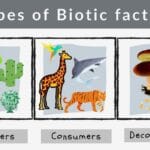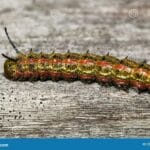Hey there, curious minds! Ever wonder what happens to animals in the wild after they die? While the thought might make some squeamish, it’s a fascinating and essential part of the circle of life. And that’s where scavengers come in – the unsung heroes of the animal kingdom. These often-overlooked creatures play a vital role in maintaining the delicate balance of our ecosystems. Let’s dive into the world of scavengers and uncover the secrets behind their unique dietary preferences.
Unearthing the Feast: What Do Scavengers Eat?
The “fare eaten by scavengers” is known as carrion. This term refers to the decaying flesh of dead animals – not the most appetizing meal for us, but a true feast for these specialized eaters. Think of scavengers as nature’s clean-up crew, efficiently removing decaying carcasses that could otherwise pose health risks to other animals, including us.
The Circle of Life: Why Are Scavengers So Important?
While their diet might not be glamorous, the role of scavengers in the ecosystem is crucial. Here’s why:
- Disease Control: By consuming carcasses, scavengers prevent the buildup of decaying matter that can harbor and spread diseases.
- Nutrient Recycling: Carrion is a treasure trove of nutrients. Scavengers break down these complex organic materials, returning essential elements to the environment where they can be reused by plants and other organisms.
- Food Web Support: Scavengers provide a vital food source for larger predators. For instance, lions and tigers, while primarily hunters, might scavenge a meal if the opportunity arises.
A Diverse Cast of Characters: Types of Scavengers
The world of scavengers is surprisingly diverse, encompassing a fascinating array of creatures, big and small. Some of the most well-known include:
- Birds of Prey: Vultures, condors, and eagles are often seen soaring above, their keen eyesight scanning for carrion from afar. Some vultures, like the bearded vulture, are even known to drop bones from great heights to crack them open and access the nutritious marrow inside.
- Mammals on the Move: Hyenas are perhaps the most iconic mammalian scavengers, often depicted in documentaries battling lions for a meal. But other mammals, like wolves, coyotes, foxes, and even bears, will readily scavenge when the opportunity arises.
- Insects Up Close: Don’t underestimate the power of the small! Insects like dung beetles, burying beetles, and various species of flies play a crucial role in breaking down carrion. Dung beetles, for example, are famous for rolling balls of dung (animal waste, which is also a type of carrion) and using it to feed their young.
- Aquatic Cleanup Crews: Even underwater, scavengers are hard at work. Crabs, lobsters, hagfish, and certain types of sharks all contribute to keeping aquatic ecosystems clean by consuming dead marine animals.
Challenges for Scavengers: Human Impacts and Conservation
Sadly, many scavenger populations are facing growing threats due to human activities.
- Habitat Loss: As humans continue to encroach on natural habitats, scavengers lose valuable foraging grounds, making it harder for them to find food.
- Pollution: Pollution from various sources can contaminate carrion, making it dangerous for scavengers to consume. For example, lead poisoning from ingesting animals that have been shot with lead ammunition is a serious threat to many bird species, particularly vultures.
- Direct Persecution: Scavengers are sometimes persecuted by humans due to misconceptions about their role in the ecosystem. This often stems from their association with death or the mistaken belief that they spread diseases.
Protecting scavengers and their vital role in the ecosystem requires a multi-faceted approach:
- Habitat Conservation: Protecting and restoring natural habitats is crucial for ensuring scavengers have access to the resources they need to survive.
- Reducing Pollution: Minimizing pollution, including reducing our reliance on lead ammunition, is essential for protecting scavengers from ingesting harmful substances.
- Public Education: Educating the public about the importance of scavengers and dispelling myths and misconceptions can go a long way in fostering appreciation for these often-misunderstood creatures.
The Future of Scavengers: Ongoing Research and Conservation Efforts
Scientists are continually making new discoveries about scavengers, their feeding habits, and their complex roles in various ecosystems. Ongoing research is helping us better understand how human activities impact these creatures and what steps we can take to ensure their survival. By supporting conservation efforts and promoting responsible interactions with wildlife, we can all do our part to ensure these unsung heroes continue their essential work, maintaining the balance of nature for generations to come. After all, a healthy planet benefits everyone!
Internal Link Integration:
Various small animals and organisms are scattered on the forest floor, providing food and nourishment to scavengers and attracting predators in the subarctic evergreen forest.












